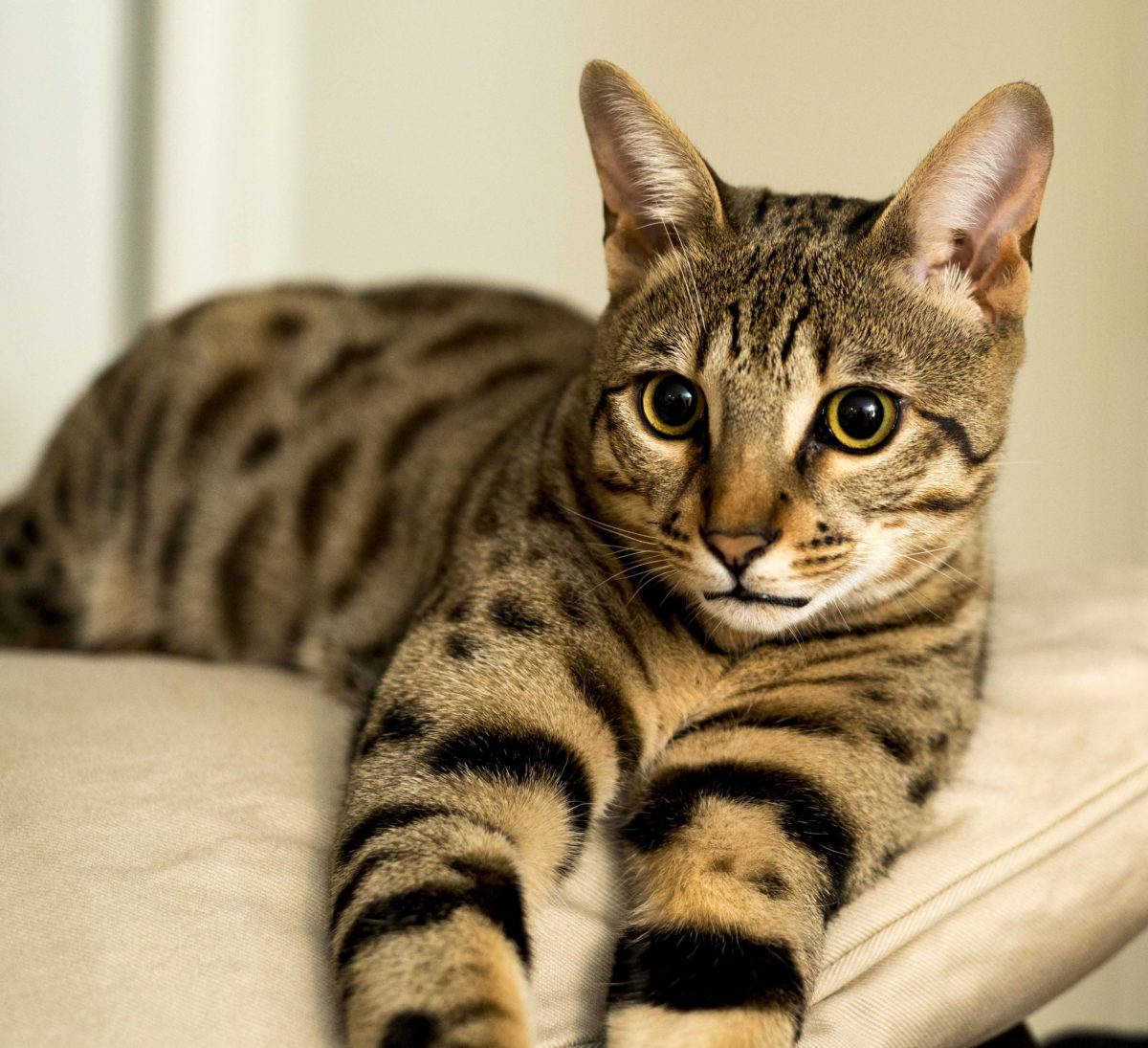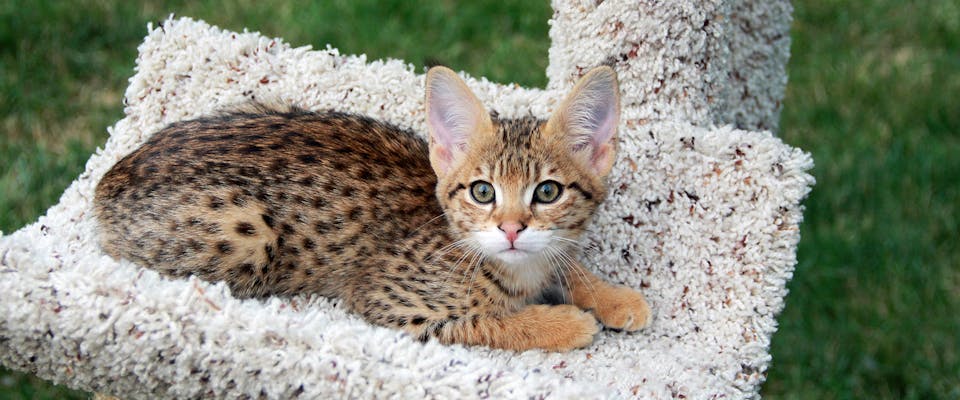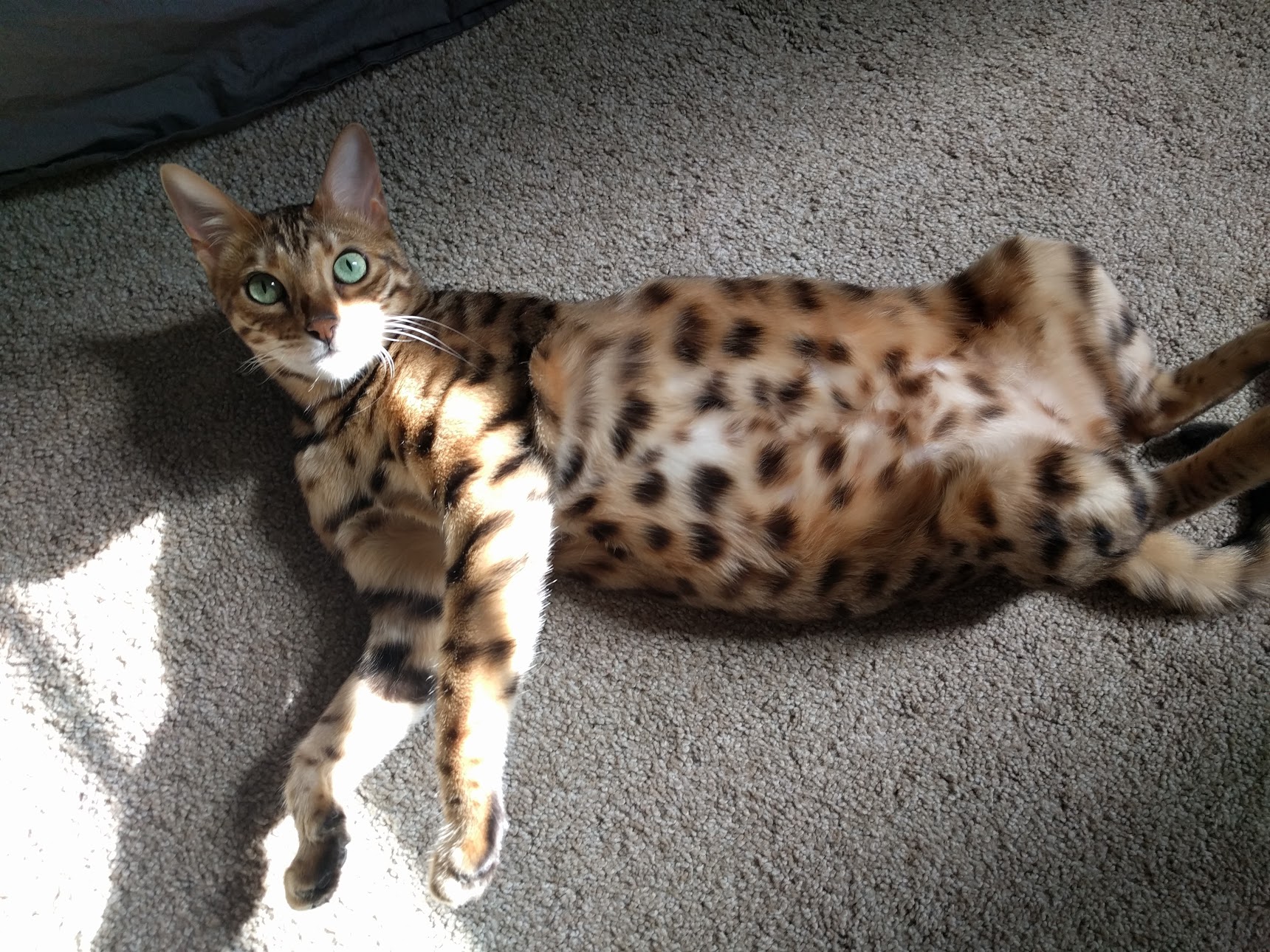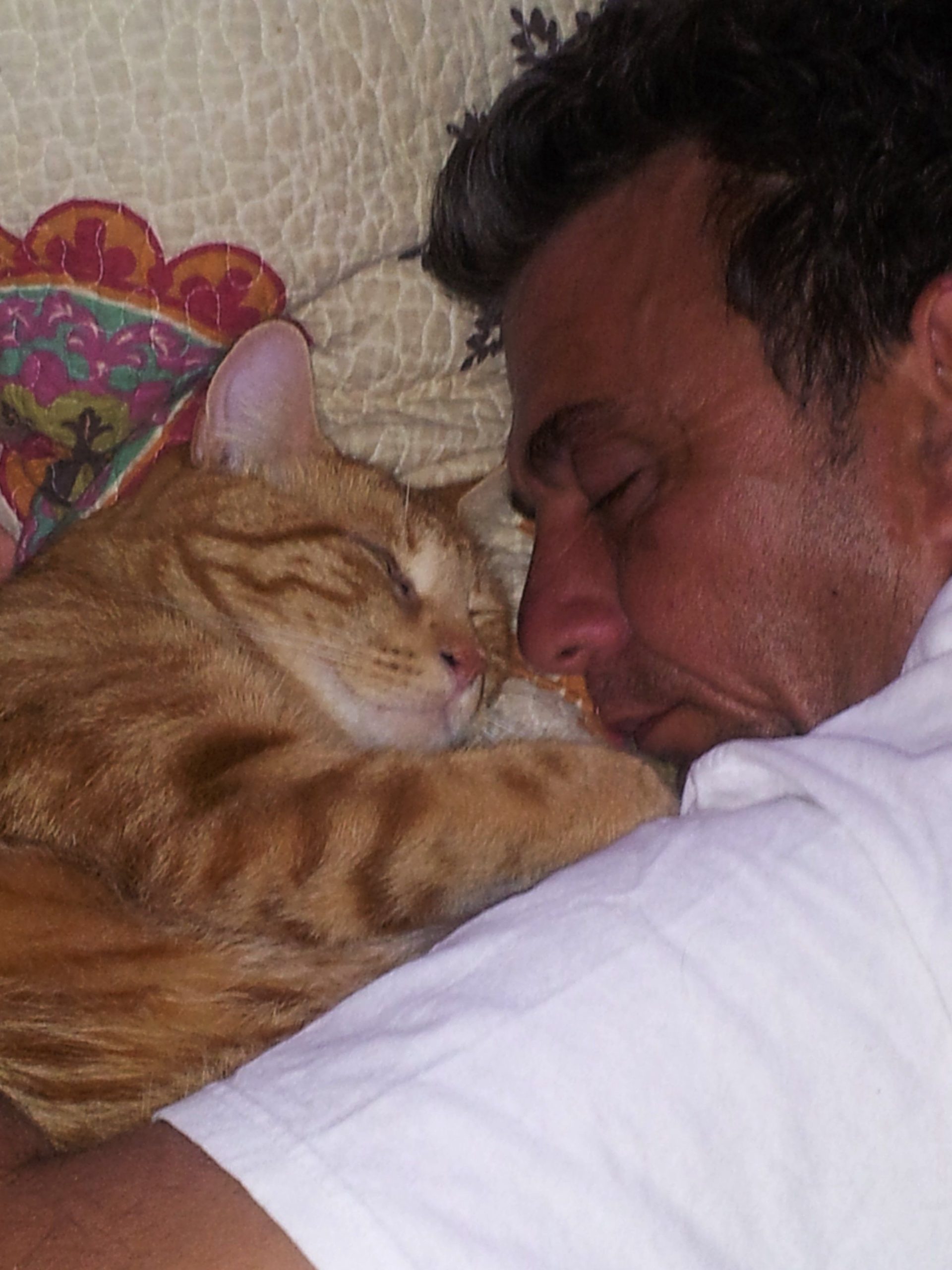Contents
- I. Introduction to Savannah Cats
- II. Understanding the Shedding Process of Savannah Cats
- III. Factors That Affect the Shedding of Savannah Cats
- IV. Tips to Minimize Shedding in Savannah Cats
- V. How to Properly Groom a Savannah Cat
- VI. Common Myths About Savannah Cats and Shedding
- 1. Savannah cats don’t shed at all
- 2. Savannah cats are hypoallergenic
- 3. Savannah cats require minimal grooming
- 4. Savannah cats only shed during specific seasons
- 5. Savannah cats shed less than other breeds
- 6. Savannah cats don’t require regular brushing
- 7. Bathing eliminates shedding in Savannah cats
- 8. Savannah cats shed less if they are kept indoors
- VII. Frequently Asked Questions about Savannah Cats and Shedding
- 1. Do Savannah cats shed a lot?
- 2. How often do Savannah cats shed?
- 3. Can I reduce the shedding of my Savannah cat?
- 4. Are there any specific grooming techniques for Savannah cats?
- 5. Do Savannah cats need regular baths to reduce shedding?
- 6. Are there any supplements or products that can help with shedding?
- 7. Is there a particular season when Savannah cats shed more?
- 8. Can I prevent shedding in my Savannah cat?
- 9. Are there any health issues associated with excessive shedding in Savannah cats?
- 10. Can allergies be triggered by the shedding of Savannah cats?
I. Introduction to Savannah Cats

Savannah cats are a unique and captivating breed that has gained popularity in recent years. They are a cross between a domestic cat and a serval, a wild African cat known for its distinctive spotted coat and long legs. This combination results in a stunning and exotic appearance that sets the Savannah cat apart from other domestic feline breeds.
One of the most striking features of Savannah cats is their size. They are considered to be one of the largest domestic cat breeds, often weighing between 8 to 20 pounds. Their tall and slender build gives them a regal presence, resembling that of their wild serval ancestors.
Besides their physical attributes, Savannah cats are known for their high intelligence and playful nature. They are highly active and require plenty of mental and physical stimulation to thrive. Their curious and adventurous personalities make them excellent companions for those who are willing to provide them with the appropriate environment and enrichment.
Another interesting aspect of Savannah cats is their coat pattern. Most Savannah cats inherit the spotted coat pattern from their serval parent, but some may have marbled or solid patterns as well. Their coat colors can vary from golden, silver, brown, or black, creating a visually stunning and diverse range of appearances.
When it comes to grooming, Savannah cats are relatively low-maintenance. Their short coat does not require frequent brushing, but regular nail trimming and dental care are essential for their overall health. Additionally, providing them with appropriate scratching posts and toys can help prevent furniture damage and keep them mentally stimulated.
Conclusion
II. Understanding the Shedding Process of Savannah Cats
:max_bytes(150000):strip_icc()/savannah-grass-741880495-2000-749cb3158cdb40e29162e9dd0aaee5f0.jpg)
Savannah cats are known for their exotic appearance and lively personality. As a potential owner, it’s important to understand their shedding process to ensure you can cater to their grooming needs effectively.
1. Shedding Frequency
Savannah cats have a moderate shedding frequency. While they are not considered heavy shedders like some other cat breeds, they do shed regularly throughout the year. It’s essential to be prepared for the regular upkeep of their coat.
2. Seasonal Variation
Like most cats, Savannah cats also experience seasonal variations in their shedding. During the spring and fall, they tend to shed more as their body adjusts to the changing weather. This shedding is a natural process and helps them get rid of their old coat to make room for a new one.
3. Grooming Requirements
To manage the shedding process and keep your Savannah cat’s coat healthy, regular grooming is necessary. Brushing their fur at least once or twice a week will help remove loose hair and prevent matting. Additionally, it stimulates the production of natural oils in their skin, promoting a shiny and healthy coat.
4. Diet and Nutrition
A well-balanced diet plays a crucial role in maintaining a cat’s coat health. Providing your Savannah cat with high-quality cat food that is rich in essential nutrients can contribute to reducing excessive shedding. Consult with your veterinarian to ensure you are feeding them a suitable diet.
5. Hydration and Moisturization
Proper hydration is essential for the overall health of your Savannah cat, including their coat. Ensure they have access to fresh water at all times to keep them well-hydrated. You can also use moisturizing sprays or wipes specifically designed for cats to add moisture to their skin and coat, reducing shedding.
6. Regular Vet Check-ups
Regular visits to the veterinarian are vital to maintain your Savannah cat’s overall health and address any shedding concerns. Your vet can identify any underlying health issues that may be causing excessive shedding and provide appropriate treatment.
III. Factors That Affect the Shedding of Savannah Cats

Savannah cats are known for their exotic appearance and wild-like features. As a hybrid breed between a domestic cat and a serval, they inherit certain traits from both parents, including their shedding patterns. While they do shed, the amount of fur they leave behind can vary depending on several factors. Understanding these factors can help you manage and minimize shedding in your Savannah cat.
1. Seasonal Changes
Like many other animals, Savannah cats experience changes in their coat thickness throughout the year. During warmer months, they tend to shed more as they adapt to the rising temperatures. This shedding is often more noticeable and may require more frequent grooming sessions. On the other hand, during colder months, their coat becomes denser to keep them warm, resulting in less shedding.
2. Genetics
Genetics play a significant role in determining the shedding patterns of Savannah cats. Some cats may inherit a thicker coat with more hair follicles, leading to increased shedding. Others may have a coat that sheds less frequently but in larger quantities. If shedding is a concern for you, it is advisable to inquire about the shedding history of the cat’s parents before bringing a Savannah cat home.
3. Diet and Nutrition
A well-balanced diet is essential for maintaining healthy skin and coat in cats. Savannah cats require a diet rich in essential fatty acids, such as omega-3 and omega-6, to promote a shiny and healthy coat. Inadequate nutrition can lead to dry skin, which can cause excessive shedding. Consult your veterinarian to ensure that your cat’s diet meets their nutritional needs.
4. Grooming Routine
A regular grooming routine is crucial for managing shedding in Savannah cats. Brushing your cat’s coat at least once a week helps remove loose fur and prevents it from spreading throughout your home. Additionally, grooming sessions provide an opportunity to check for any underlying skin issues that may contribute to shedding. Use a brush suitable for your cat’s coat type to ensure effective removal of loose hair.
5. Stress Levels
Savannah cats are intelligent and active animals that thrive in environments that provide mental and physical stimulation. Stress can affect their overall health, including their coat condition. High-stress levels can lead to excessive shedding as a response to various triggers, such as changes in routine, lack of environmental enrichment, or conflicts with other pets. Creating a calm and enriching environment for your Savannah cat can help reduce stress-related shedding.
By considering these factors and implementing appropriate measures, you can effectively manage shedding in your Savannah cat. Remember to provide a balanced diet, establish a grooming routine, and create a stress-free environment to promote a healthy and well-maintained coat for your beloved feline companion.
IV. Tips to Minimize Shedding in Savannah Cats

Savannah cats are known for their beautiful coats, but unfortunately, they can also shed quite a bit. If you’re a proud owner of a Savannah cat and want to minimize shedding, there are a few tips you can follow. These tips will not only help keep your cat’s coat in good condition but also reduce the amount of hair you find around your home.
1. Regular Grooming
Grooming plays a crucial role in minimizing shedding in Savannah cats. Make sure to brush your cat’s coat regularly, at least once or twice a week. This helps to remove loose hair and prevents it from spreading all over your house. Choose a brush that is suitable for your cat’s coat length, and be gentle while grooming to avoid causing any discomfort.
2. Proper Nutrition
A healthy diet is essential for maintaining a healthy coat. Make sure your Savannah cat is getting a balanced and nutritious diet that includes high-quality protein. Consult your veterinarian for advice on the best cat food options for your specific breed and be sure to provide plenty of fresh water.
3. Hydration
Proper hydration is also important for minimizing shedding. Ensure that your Savannah cat has access to clean water at all times. Dehydration can lead to dry skin, which can cause excessive shedding. Consider using a water fountain to encourage your cat to drink more water.
4. Regular Baths
Bathing your Savannah cat regularly can help keep their coat clean and reduce shedding. However, it’s important not to overdo it, as excessive bathing can strip the coat of essential oils and cause dryness. Use a cat-specific shampoo and make sure to rinse thoroughly.
5. Stress Reduction
Stress can contribute to excessive shedding in cats. Create a calm and peaceful environment for your Savannah cat, providing them with plenty of opportunities for mental and physical stimulation. Play with them regularly and provide toys and scratching posts to keep them entertained and stress-free.
6. Regular Vet Check-ups
Regular visits to the veterinarian are not only important for your cat’s overall health but also for monitoring any potential skin or coat issues. Your vet can provide advice on specific products or supplements that may help reduce shedding in your Savannah cat.
By following these tips, you can minimize shedding in your Savannah cat and keep their coat healthy and beautiful. Remember, every cat is unique, so it may take some trial and error to find the best routine for your furry friend. With patience and consistency, you can significantly reduce shedding and enjoy a cleaner, hair-free home.
V. How to Properly Groom a Savannah Cat

Grooming is an essential part of keeping your Savannah cat healthy and happy. While these exotic felines may not require as much grooming as some other breeds, it is still important to establish a regular grooming routine to maintain their coat and overall well-being.
1. Brushing
Regular brushing is key to keeping a Savannah cat’s coat in top condition. Use a soft bristle brush or a grooming glove to gently remove loose hairs and prevent matting. Brushing also helps distribute the natural oils in their fur, keeping it shiny and smooth.
2. Bathing
Unlike most cats, Savannah cats often enjoy water and may be receptive to bathing. Use a cat-specific shampoo and lukewarm water to gently bathe your cat. Be sure to rinse thoroughly to remove all traces of shampoo. Bathing should be done sparingly, as excessive baths can dry out their skin.
3. Nail Trimming
Trimming your Savannah cat’s nails regularly is crucial to prevent them from becoming too long or sharp. Use a cat nail trimmer and be cautious not to cut too close to the quick. If you’re unsure about how to do this, consult with a veterinarian or a professional groomer.
4. Dental Care
Just like any other cat, Savannah cats need proper dental care. Brushing their teeth regularly with a cat-specific toothbrush and toothpaste helps prevent dental diseases and keeps their breath fresh. Additionally, providing chew toys or dental treats can help maintain their oral health.
5. Ear Cleaning
Inspect your Savannah cat’s ears regularly for any signs of dirt, wax buildup, or infection. Use a cat ear cleaner and a cotton ball or soft cloth to gently clean the outer part of their ears. Avoid inserting anything into the ear canal, as it can cause damage.
6. Eye Care
Check your Savannah cat’s eyes regularly for any signs of redness, discharge, or irritation. Use a damp cloth or cotton ball to gently wipe away any debris from the corners of their eyes. If you notice any persistent issues, consult with a veterinarian.
Grooming your Savannah cat not only keeps them looking their best but also allows you to bond with them. Make grooming sessions a positive experience by offering treats or praise, and always be gentle and patient with your furry friend. If you have any concerns about grooming or your cat’s overall health, don’t hesitate to seek advice from a veterinarian.
VI. Common Myths About Savannah Cats and Shedding
When it comes to Savannah cats, there are several common myths surrounding their shedding habits. Let’s debunk some of these misconceptions:
1. Savannah cats don’t shed at all
Contrary to popular belief, Savannah cats do shed. All cats, regardless of breed, shed their fur to some extent. However, compared to other breeds, Savannah cats have a shorter and less dense coat, which may give the impression that they shed less.
2. Savannah cats are hypoallergenic
While it is true that some individuals with allergies may be less sensitive to Savannah cats, labeling them as hypoallergenic is misleading. People with allergies react to a protein called Fel d 1, which is found in cat saliva and skin glands. Since Savannah cats still produce this protein, they can still trigger allergies in some individuals.
3. Savannah cats require minimal grooming
Although Savannah cats have shorter coats, they still require regular grooming. Grooming not only helps prevent matting and tangles but also reduces shedding by removing loose hair. Brushing your Savannah cat at least once a week will help keep their coat healthy and minimize shedding.
4. Savannah cats only shed during specific seasons
Unlike some other cat breeds that shed heavily during specific seasons, Savannah cats shed year-round. However, they may experience slightly more shedding during spring and fall as their bodies adjust to changing temperatures and daylight hours.
5. Savannah cats shed less than other breeds
While Savannah cats may have a shorter coat, they can still shed a significant amount. Shedding can vary from cat to cat, depending on genetics, diet, and overall health. It’s important to note that no cat breed is completely non-shedding.
6. Savannah cats don’t require regular brushing
Regular brushing is crucial for Savannah cats, even with their shorter coats. Brushing helps remove dead hair and stimulates the production of natural oils, keeping their coat healthy and shiny. Neglecting regular brushing can lead to increased shedding and the formation of mats.
7. Bathing eliminates shedding in Savannah cats
Bathing your Savannah cat can help reduce shedding to some extent by removing loose hair. However, excessive bathing can strip their coat of essential oils, leading to dry skin and increased shedding. It’s best to consult with a veterinarian to determine the appropriate bathing frequency for your Savannah cat.
8. Savannah cats shed less if they are kept indoors
While keeping your Savannah cat indoors can minimize exposure to environmental factors that may trigger shedding, it does not eliminate shedding altogether. Indoor cats still shed to maintain their coat’s health, so regular grooming and cleaning are necessary to manage their shedding.
By debunking these common myths, we can better understand the shedding habits of Savannah cats. Remember, regular grooming and proper care are essential to keeping your Savannah cat’s coat healthy and minimizing shedding.
VII. Frequently Asked Questions about Savannah Cats and Shedding
Here are some commonly asked questions about Savannah cats and shedding:
1. Do Savannah cats shed a lot?
Yes, Savannah cats do shed, but the amount of shedding can vary from cat to cat. Generally, they have a medium to low shedding level compared to some other cat breeds.
2. How often do Savannah cats shed?
Savannah cats typically shed throughout the year, but they may experience a heavier shedding period during seasonal changes, such as spring and fall.
3. Can I reduce the shedding of my Savannah cat?
While you cannot completely eliminate shedding in Savannah cats, there are steps you can take to minimize it. Regular grooming, such as brushing their coat, can help remove loose hair and reduce shedding.
4. Are there any specific grooming techniques for Savannah cats?
Savannah cats have short, dense fur that doesn’t require excessive grooming. Using a soft brush or a grooming mitt to brush their coat once or twice a week should be sufficient. Additionally, providing them with a good quality diet and ensuring they are well hydrated can also contribute to a healthier coat and potentially reduce shedding.
5. Do Savannah cats need regular baths to reduce shedding?
No, Savannah cats generally do not require frequent baths. Bathing them too often can strip their coat of essential oils and lead to dry skin, which may actually increase shedding. However, if your cat gets dirty or develops an unpleasant odor, you can bathe them occasionally using a cat-approved shampoo.
6. Are there any supplements or products that can help with shedding?
There are various supplements and products available in the market that claim to reduce shedding in cats. However, it is recommended to consult with a veterinarian before using any of these products, as they may not be suitable for all cats and could have potential side effects.
7. Is there a particular season when Savannah cats shed more?
As mentioned earlier, Savannah cats may experience a heavier shedding period during seasonal changes, particularly in spring and fall. This shedding is often associated with the transition of their coat to adapt to the changing weather conditions.
8. Can I prevent shedding in my Savannah cat?
No, shedding is a natural process for cats, including Savannah cats. It is a way for them to get rid of old or damaged hair and to regulate their body temperature. It is not possible to completely prevent shedding in any cat breed.
9. Are there any health issues associated with excessive shedding in Savannah cats?
Excessive shedding can sometimes be a sign of underlying health issues in cats. If you notice a sudden increase in shedding or any other abnormal behavior or symptoms, it is advisable to consult with a veterinarian to rule out any potential health problems.
10. Can allergies be triggered by the shedding of Savannah cats?
Some individuals may be allergic to cat dander, which is a common allergen found in cat fur, saliva, and urine. If you or someone in your household has allergies, it is recommended to spend time with a Savannah cat before bringing one home to see if any allergic reactions occur.

Jackson is an accomplished content writer with a flair for captivating storytelling. With a Bachelor’s degree in English Literature from the prestigious University of California, Berkeley, Hunter’s educational background has honed his writing skills to perfection. His love for felines is evident in his extensive knowledge of cat behavior and care, making him an expert in the field. Hunter’s passion for cats has led him to contribute insightful articles to various online platforms, providing valuable information and tips to cat owners worldwide. With his exceptional writing abilities and deep understanding of cats, Hunter continues to create engaging content that resonates with readers and leaves a lasting impact.
